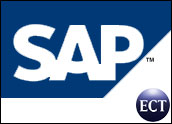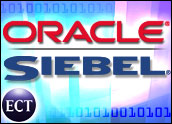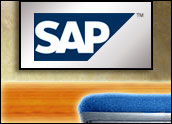
I have been wracking my brain for an adequate metaphor to describe the situation that has developed in the CRM world and in enterprise software in general.
It started about two years ago when Larry Ellison of Oracle looked at the enterprise software market and decided that SAP could conquer the world unless it was checked. At the time, enterprise software had more players and with the exception of SAP it was characterized by many medium-size companies each doing their own things with the result that building support for end-to-end business processes typically involved an integration project or two. Those projects were expensive, systems integrators thrived, and project time and cost overruns were common. It was that situation that had proven to be such fertile ground for the on demand message promoted first and loudest by Salesforce.com.
Consolidating the Industry
Others saw what Ellison saw, but Peoplesoft moved first in acquiring JD Edwards. Oracle promptly put in a hostile bid for Peoplesoft and eventually won. Meanwhile, investors impatient with Siebel’s progress caused Siebel to fall into Oracle’s lap in a deal that just concluded.
The result has been that Larry Ellison has achieved his goal of consolidating the industry and building a company that has the critical mass to go toe-to-toe with SAP on the applications side — once all the integration and consolidation is finished, that is. That brings us up to last week. No sooner had Oracle closed on the Siebel deal than SAP announced its on demand CRM solution.
In a rare display of symmetry, SAP brought IBM to the party. At the SAP announcement in New York, Big Blue’s representative stated the obvious, that SAP runs on DB2 (take that Oracle!) and that IBM Global Services has a ton of CRM and on demand expertise just waiting to be deployed to help SAP further its CRM ambitions. What was left out was that the CRM on demand expertise comes largely from IBM’s experience hosting and promoting Siebel OnDemand. Also, left out of the discussion, probably due to time constraints, is the fact that IBM has the largest CRM deployment on the planet — about 60,000 Siebel users to be precise.
Long-Standing Battle
Siebel and SAP have been competitors for a long time and each has fought tooth and nail for supremacy in CRM, contesting each other’s market share numbers and methods of counting. It happens every spring in what I call the “Silly Season” where each company’s analyst and public relations teams pull out all the stops to convince people at Gartner, IDC, Credit Suisse First Boston, and other firms, that they generated greater revenue or deployed more seats than in the previous year. The metrics used are not really clear, which is part of the fun of watching this coronation process.
Similar things can be said of Oracle and SAP where ERP is concerned, they are tough competitors though SAP has more solid bragging rights. So it made perfect sense last week when SAP aligned itself and its friend against a now consolidated common enemy.
They say that nature abhors a vacuum and when one seems on the verge of developing, equilibrium reactions take place to resettle the balance. Large, mature markets demand balance, a clear choice of competitors who, though they might sell very similar products and services, offer them in different ways to gain an advantage in select markets — the go to market strategy. You can’t be all things to all people which leaves some bases relatively uncovered and opens niches for the competition.
Forcing Their Hand
Part of what happened last week was simply the rebalancing of the enterprise software industry. SAP didn’t care very much about the on demand market which was evident from its lack of entry until its arch rival got one of the premier solutions in the business. At that point SAP could no longer ignore this developing market, despite the fact that it preferred selling traditional products to IT departments of major corporations.
If you look at what SAP announced — just SFA and only focused on the 100 to 200 sales rep market in enterprise and high end mid-market companies — and if you gave the benefit of the doubt to all the future plans to deliver marketing and service as well as hybridized solutions, you can see this is not much more than an effort to checkmate Oracle in the CRM market. SAP didn’t even bother to develop a multi-tenant architecture, it’s simply hosting code on blade servers — an approach much like Oracle’s CRM facilities management offer. SAP made some veiled comments about Salesforce.com alleging that SAP’s architecture is superior for preventing down time, but that was largely seen as minor collateral damage.
As Oracle and SAP rebalance in the front office space, the real winners will be companies like Salesforce.com, NetSuite, RightNow, and a large swath of emerging companies with complementary solutions that help the market grow at the margins. Like two sumo wrestlers in the middle of the ring, the titans will occupy each other while the minions run around unchecked to develop the on demand economy that could eventually out compete and replace the titans.
In thinking of all this, it finally struck me. The metaphor for the front office market today is the Mexican Standoff.
Denis Pombriant is a well known thought leader in CRM and the founder and managing principal of the Beagle Research Group, a CRM market research firm and consultancy. Pombriant’s latest white paper, Adding Sales to the Call Center Agenda, summarizes his recent research in the call center industry. In 2003, CRM Magazine named Pombriant one of the most influential executives in the CRM industry. Pombriant is currently working on a book to be published next year. He can be reached at [email protected]























































